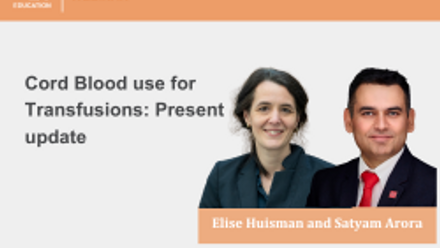Transfusion and Apheresis Science 2022 Dec 15;103633. doi:10.1016/j.transci.2022.103633.
Introduction
Physician’s knowledge of transfusion medicine (TM) is critical for patient’s safety. Blood transfusion is not without risks with ongoing concerns on both infectious and non-infectious complications. Practice interventions are essential in order to ensure safety of the transfusion cycle. The use of e-learning methodologies (such as computer software, smartphone applications, or website resource) has already become an integral part of medical education [1]. E-learning provides a self-paced platform that offers adaption to the recipient’s learning objectives and speed of acquiring knowledge [2]. In addition, e-learning in medical education provides an interactive learning scheme that may contain information in the form of text or audio-visual materials, and clinical cases / scenarios to verify acquired knowledge and stimulate knowledge application and problem-solving. This learning scheme was reported to be more attractive for the learner and is associated with higher satisfaction [3], [4]. Tools that implement innovative learning techniques, such as flashcards, mnemonics or creation of mind maps/ logic structures, have been proven to be highly effective in acquiring knowledge [5], [6]. Ideally, these platforms should have some assessment of knowledge acquired. Quizzes are proven to have an effect on increasing motivation and commitment during the learning process [7], [8] The evaluation at the end of the module allows the participant to obtain a certificate confirming the completed training and acquired knowledge. E-learning methods demonstrate at least equivalent effectiveness in knowledge acquisition compared to traditional learning methods [9].
Published studies indicate that the knowledge in the field of TM is insufficient, and postgraduate training may be one of the interventions that have a positive effect on the improvement in this area [10], [11], [12], [13], [14]. Knowledge of transfusion-related adverse events was reported to be low among non-transfusion medicine physicians [15]. Continuous training of medical personnel in the field of TM is important to avoid preventable errors that account for most of serious adverse reactions and events as per the Serious Hazard of Transfusion (SHOT) 2020 report; 224 out of 1072 of which were attributed to ineffective / inadequate training [16]. It is worth emphasizing that the basic condition for a safe transfusion is the possession of appropriate qualifications, obtained through continuous education, of all staff involved in the transfusion chain [11], [17]. The objectives of e-learning courses in TM should not be limited only to learning, but also on continuous deepening and verification of acquired knowledge [18].
The source of e-learning modules in transfusion varies. In a recent survey, more than half of e-learning modules in transfusion medicine were developed inhouse within the organisations, while a third is offered by third-party providers [19]. In the field of TM, there are several examples of e-learning programs in use, a selected list is displayed in Table 1. The development of these modules can be labour intensive and involves input from a multidisciplinary team, including medical professionals and other disciplines [20]. Access to these modules can be challenging for many learners, especially in low- and middle-income countries (LMICs). Gaining access to existing transfusion medicine e-learning resources may help offset development and maintenance costs particular for countries with limited resources [21].
In line with its mission of enhancing global transfusion practice, the International Society of Blood Transfusion (ISBT), represented by the Clinical Transfusion Working Party (WP), and in collaboration with the European Blood Alliance (EBA), developed a freely-accessible transfusion reaction e-learning module tailored to young professionals [22]. The aim of this module is to provide opportunity for advancing knowledge and education. In this article, the development process, technical details, content and preliminary results on the utilisation of this e-learning module are presented.



















